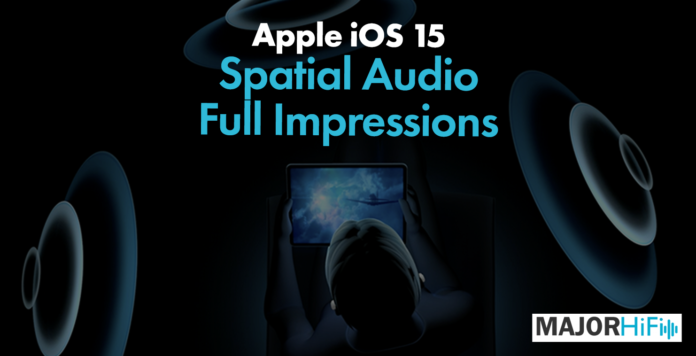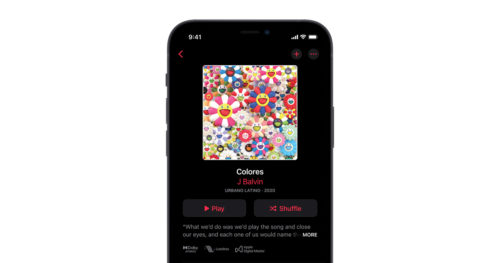Earlier this year, Apple announced that its spatial audio feature was coming to Apple Music as part of its move to high-fidelity streaming. In 2020, Apple released spatial audio for movies and TV as part of IOS 14. Now, IOS 15 has arrived to make spatial audio available to anyone who owns a pair of Airpods Pro and Airpods Max.
While spatial audio is still a new development for some headphone manufacturers, Apple has come a bit late to the game over Sony and Dolby Atmos integrated devices. In fact, spatial audio through Dolby Atmos has been more commonplace as early as 2012 when cinemas were starting to integrate this new technology in their sound systems. Since then, other companies have been developing their own spatial audio technology, with Apple really bringing the concept to the mainstream.
What Is Spatial Audio
So far it may seem like a far-out idea, but in a few years, spatial audio might start to become the norm for wireless listeners. For those who may be unfamiliar with the difference, think of it as hearing sound in a bubble rather than conventional left/right stereo. In stereo, sound mixers and engineers are restricted to two channels when dealing with most music recording. Mixers who work in post-production sound for film are given a bit more leeway with 5.1 and 7.1 surround sound, which is also different from spatial audio technology. Spatial audio is object-based instead of channel-based, meaning sound mixers are allowed to move sounds in a more exact position within the sound field, resulting in a more three-dimensional effect. This significantly improves listener engagement and immersion in whatever they might be listening to, from music to film sound, to game audio.
Dolby Atmos
In 2012, Dolby Atmos was able to accomplish this in theaters by placing additional surround speakers at different heights, as well as more significantly on the ceiling, where the audience can be enveloped in this dome of sound no matter where they are sitting. Aside from cinemas, home theater systems with Dolby Atmos were also developed, but they tend to run at a high price that not everyone could afford. Work was then done to “virtualize” the Atmos experience in order to make the technology more accessible to consumers.
With soundbars gaining more popularity over home sound systems, Atmos was integrated for a few soundbars, but that also drove up prices pretty significantly. So instead of purchasing additional speakers, now all you need to experience a version of Atmos is having the right receiver that can properly simulate the experience, which has a wider price range. Streaming services have also adapted to support Dolby Atmos, such as Netflix, Amazon Prime Video, and Apple TV. Game consoles like the Xbox Series X and Series S have also begun to support Atmos as well, proving important for certain gaming experiences.
Dolby Atmos And Apple Music
With the virtualization of the Atmos experience, companies have started to either support it with their services or develop their own spatial sound technology. Apple’s spatial sound feature was introduced in 2020 with IOS 14, where you were now able to experience 5.1 and 7.1 surround sound through supported apps. They were able to accomplish this through specific audio filters that mimic the experience of surround sound through stereo headphones.
With the introduction of spatial audio and lossless streaming to Apple Music, you can now listen to a wide selection of albums not only with Apple Airpods but with any headphones. They’ve even teamed up with Dolby to provide Atmos-supported tracks to the platform. However, not every headphone will provide the same effect with Atmos, with Apple even providing a warning that using Atmos-supported headphones will garner the best results.
How Do I Get Apple Spatial Audio
If you have an iPhone made after 2018, chances are you already have it. All you need to do is go to your accessibility settings and enable it. If you have AirPods Pros or AirPods Max going about activating spatial audio is a bit easier, with the only thing you really need to do is hold down the volume bar and switch out of stereo mode to spatial mode. Other headphones require you to go into your music settings and switch Dolby Atmos to always-on, where you will get a pop-up notification letting you know it’s activated.
With IOS 15 there’s now a new addition to Apple’s spatial audio and that’s head tracking. This is a new way to experience spatial audio that you don’t even need Apple Music to use. Head tracking uses gyroscopes to place the track according to your head movement. The sound becomes unglued, with head turns causing all of the elements to reposition themselves based on where your head is.
Full Impressions
For this section, I tested Apple’s spatial audio capabilities using my iPhone 11 and a pair of AirPod Pros. I wanted to get an idea of what another pair of non-Apple headphones sounded like with the Atmos feature. Starting with the AirPods Pro, the use of spatial audio actually improves upon an issue I have with the earbuds in general. Soundstage is almost non-existent without the use of Atmos and spatial audio, which made me want to try a better set of headphones with the feature on.
For the AirPods though, the one word I’d use to describe the experience is “cool.” What’s most noticeable improved here is the height and dimension of the sound. Inward becomes outward, like a digital version of what it’s like to hear a high-end open-back headphone. It’s not quite as natural as that, but in terms of replicating a virtual version of all the best aspects of surround sound and Atmos, Apple’s spatial audio does an admirable job.
By far my favorite aspect has sound feel properly distant in the mix, while still operating in a close headspace. I got more of a feeling that this was a stereo mix that has been stretched out vertically and horizontally with added air between sound elements. So far only a select amount of albums are supported through Atmos, but the library is still surprisingly vast. Listening to Hans Zimmer’s Dune soundtrack or Amy Winehouse’s “Back to Black” provided a more enticing listening experience to me than in conventional stereo, and I felt properly wow’ed by its function.
As far as the head tracking option goes, I was less engaged to use the feature as I found it more of a gimmick than anything else. I found myself turning it on for a few seconds at a time and turning it off as a sort of inessential part of the spatial audio experience. Overall, I find Apple’s spatial audio feature to be a great way to experience albums through Apple Music, and as someone who prefers a bigger soundstage, the AirPod Pros themselves are actually a much more enjoyable experience to me with this function. I see a bright future for this technology, and I’m excited to see what Apple can further develop this great feature.
MAJORHIFI may receive commissions from retail offers.










